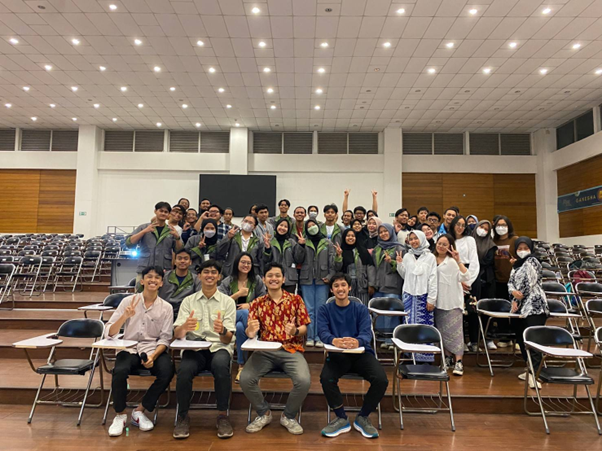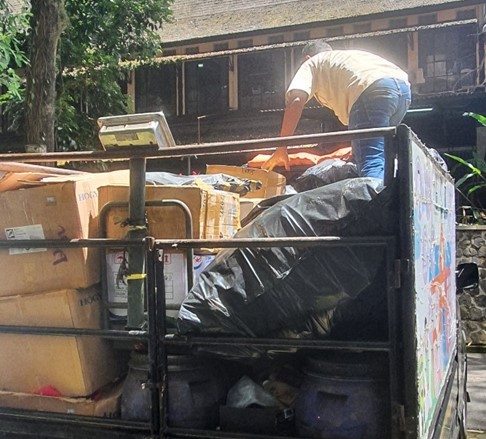Welcoming the Total Solar Eclipse in 2023 with the Bosscha Observatory
By Adi Permana
Editor Adi Permana

BANDUNG, itb.ac.id — On the total solar eclipse welcoming which will take place on April 20, 2023, the Bosscha Observatory held a talk show event with experts and eclipse chasers to educate the public on Saturday (18/3/2023).
The speakers at this event were Muhammad Yusuf as expert staff at the Bosscha Observatory, Ninok Leksono as Rector of Universitas Media Nusantara, and photographer Syafiudin Vifick.
Science explains the solar eclipse phenomenon as a condition when the sun, moon, and earth are in a line so that the sun's light is covered by the moon. According to Yusuf, the solar eclipse that will occur in April will be a hybrid solar eclipse.
According to him, this type of solar eclipse is considered special since it can be seen as an annular solar eclipse as well as a total solar eclipse. This phenomenon occurs because the moon's shadow that falls on the spherical surface of the earth is not the same for every location. Locations within the umbra area of the moon will experience a total solar eclipse, while locations within the antumbra area of the moon will experience an annular solar eclipse.
“The 20th of April solar eclipse will be a hybrid solar eclipse. There will be an annular solar eclipse as well as a total solar eclipse," Yusuf explained.
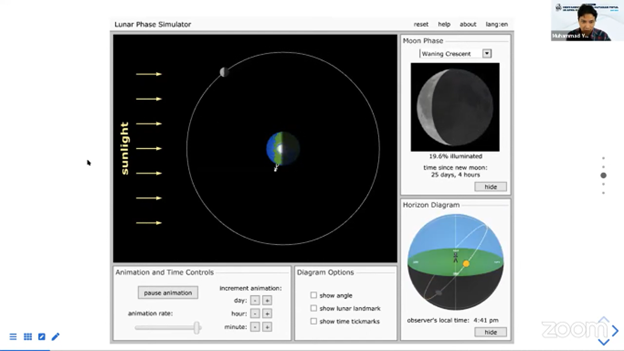
Solar eclipses observed on Earth are also considered to be more unique in comparison to solar eclipses in other parts of the solar system. This is because the size of the sun is 400 times larger than the moon, and the distance from the sun to the earth is 400 times longer than the distance from the moon to the earth. This means that the size of the moon in the sky will be exactly the same as the sun in the same observation position. This condition would not occur if the moon is too far or too close to the earth. If the moon is too far away, the size of the visible moon would be smaller so it can't completely cover the sun. On the other hand, if the moon is too close, the moon would appear larger so that the sun's corona layer would not be visible.
"The solar eclipse that we see on Earth is very special, it seems that nothing in our solar system experiences a solar eclipse like the solar eclipse on Earth."
Even though the total solar eclipse is a moment worth waiting for, its path unfortunately only passes through the eastern region of Indonesia and parts of the central region. This means that areas that are not in that path can only witness a partial solar eclipse with different obscurations depending on the distance of the observation location from the eclipse path. Even so, the Bosscha Observatory will still observe the total solar eclipse through an expedition to Kisar Island in Southwest Maluku. Observations of the eclipse from Kisar Island will later be broadcasted live via the Bosscha Observatory's YouTube channel so that people in other areas can witness the process of a total solar eclipse.
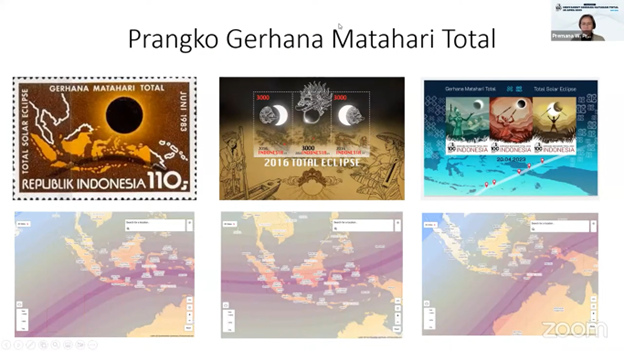
Director of the Bosscha Observatory, Dr. Premana W. Premadi explained, “The Bosscha Observatory in Lembang will only experience an eclipse of around 40%. But we have prepared expeditions to a place that will experience 100% of the eclipse. The place we chose is Kisar Island, which is the first land in Indonesia that will be hit by a total solar eclipse.”
Previously, the Bosscha Observatory collaborated with Penerbit Erlangga to provide 3,000 eclipse education packages which had been distributed to several regions throughout Indonesia. Not only that, the total solar eclipse in 2023 will also be immortalized through a special edition total solar eclipse stamp.
The publication of these stamps will later complete the total solar eclipse stamp collection from the Bosscha Observatory since 1983. With the many series of events arranged by the Bosscha Observatory, they hope that the momentum of the total solar eclipse in 2023 can become a medium for the wider community to learn and understand nature together through this rare phenomenon.
Reporter: Hanifa Juliana (Urban and Regional Planning, 2020)
Photo: Hanifa Juliana
Translator: Hanna Daniela Ayu (Aerospace Engineering, 2021)

.jpg)
.jpg)
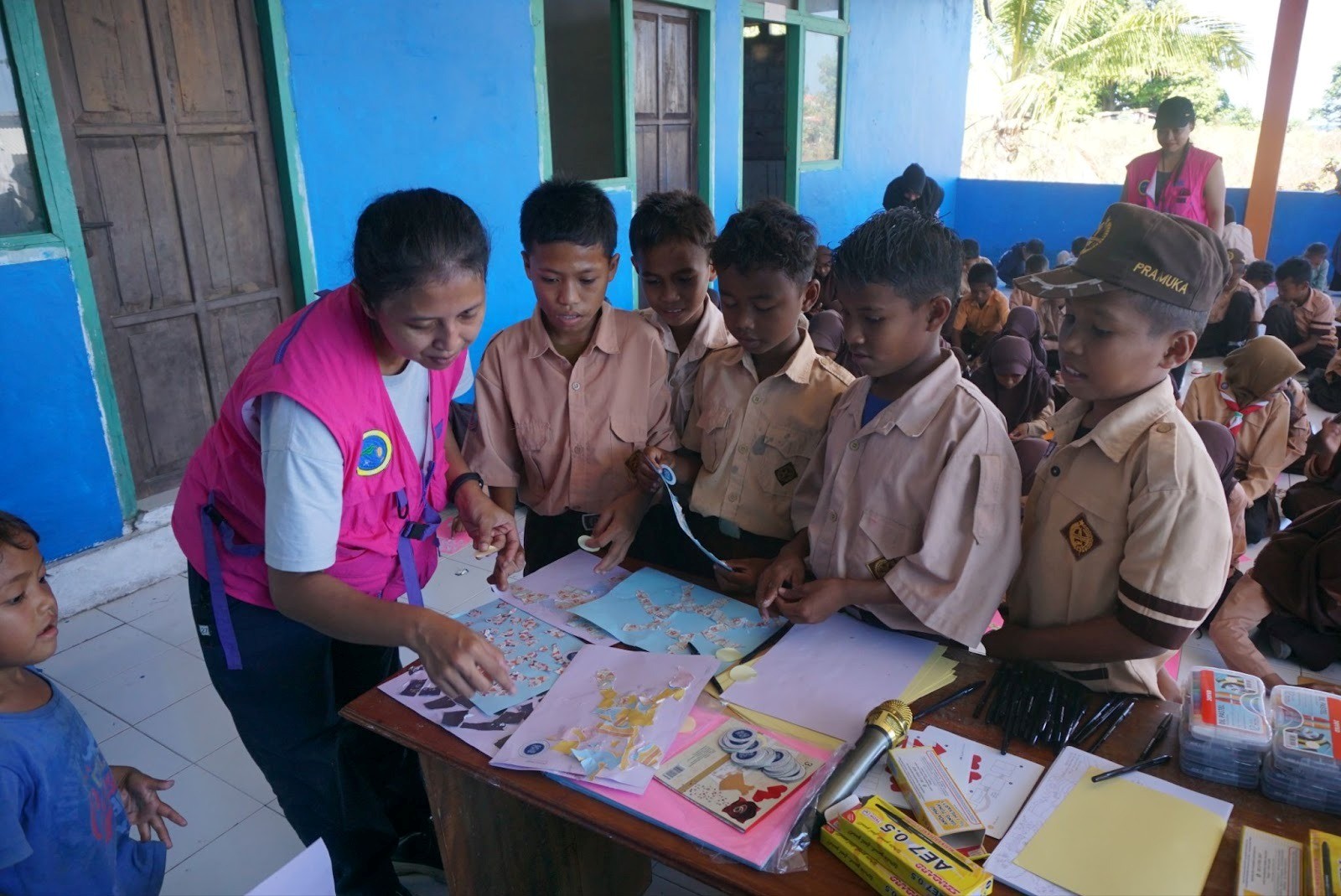

.jpg)


